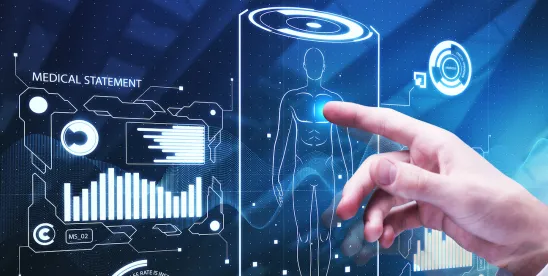The Department of Health and Human Services released its draft 2020-2025 Federal Health IT Strategic Plan for public comment. This article outlines the goals of the plan, as well as challenges in healthcare that ONC hopes the final Strategic Plan will mitigate.
IN DEPTH
On January 15, 2020, the Department of Health and Human Services (HHS) released its draft 2020-2025 Federal Health IT Strategic Plan (draft plan) for public comment. The draft plan, developed by the Office of the National Coordinator for Health Information Technology (ONC) in collaboration with more than 25 federal organizations, aims to provide a roadmap for federal agencies and serve as a catalyst for activities in the private sector. Don’t be surprised, however, that there is little implementation detail in the draft. ONC followed federal requirements for agency strategic plans set forth in White House Circular No. A-11, December 2019. Thus, the draft sets forth “what we want, why we want it and who benefits,” but does not explain the specifics of how ONC expects to get there.
In developing the draft plan, ONC looked to its “2018 Report to Congress: Annual Update on the Adoption of a Nationwide System for the Electronic Use and Exchange of Health Information“. In preparing the final version of the Strategic Plan, ONC will look to the 2019 Annual Report, which is expected to be finalized in the next several months. The recommendations of the Health Information Technology Advisory Committee (HITAC) in 2019 also informed the draft Strategic Plan. In addition, the HITAC plans to discuss the draft plan in detail at its February 19 meeting. As with all HITAC meetings, a brief opportunity for public comment will be provided. Public comments are due by March 18, and further information regarding the public comment process can be found at the end of this article. The final Strategic Plan is expected this summer.
The draft Strategic Plan sets forth four outcomes-driven goals. HHS identifies these goals within a larger context that includes the federal health information technology (IT) vision and mission, specific federal health principles, and observations about challenges and opportunities. HHS articulates the federal health IT vision as “a health system that uses information to engage individuals, lower costs, deliver high-quality care, and improve individual and population health” and its mission as “improv[ing] the health and well-being of individuals and communities using technology and health information that is accessible when and where it matters most.”
The draft Strategic Plan also identifies federal health principles, which articulate specific guideposts that federal agencies will use to carry out the mission and vision. Before the government takes any action in the health space, it will evaluate that action against these six guideposts:
-
Focus on value: Promote and pursue activities that improve health and care quality, efficiency, safety, affordability, equity, effectiveness, and access.
-
Put individuals first: Embrace person-centered care that values the whole individual, including their goals, values, culture, and privacy.
-
Build a culture of secure access to health information: Support secure health information access, exchange and use by individuals, caregivers, healthcare providers, and other stakeholders.
-
Put research into action: Strengthen feedback loops between scientific and healthcare communities to efficiently translate evidence into clinical practice and improvement.
-
Encourage innovation and competition: Support and protect innovation and competition in health IT that result in new solutions and business models for better care and improved outcomes.
-
Be a responsible steward: Develop health IT policies through open, transparent and accountable processes; use federal resources judiciously; and, when possible, rely on the private sector.
Within this context, HHS sets forth four goals, each of which includes specific objectives and strategies. Set forth below are the goals as well as the objectives for each goal. Note that the fourth goal is meant to be crosscutting and supportive of the first three goals.
GOAL 1: Promote health and wellness
-
Objective 1a: Improve individual access to health information
-
Objective 1b: Advance healthy and safe practices through health IT
-
Objective 1c: Integrate health and human services information (this includes a strategy to integrate social determinants of health data into electronic health records)
GOAL 2: Enhance the delivery and experience of care
-
Objective 2a: Ensure safe and high-quality care through the use of health IT
-
Objective 2b: Foster competition, transparency, and affordability in healthcare
-
Objective 2c: Reduce regulatory and administrative burden on providers
-
Objective 2d: Enable efficient management of resources and a workforce confidently using health IT
GOAL 3: Build a secure, data-driven ecosystem to accelerate research and innovation
-
Objective 3a: Advance individual- and population-level transfer of health data
-
Objective 3b: Support research and analysis using health IT and data at the individual and population levels
GOAL 4: Connect healthcare and health data through an interoperable health IT infrastructure
-
Objective 4a: Advance the development and use of health IT capabilities
-
Objective 4b: Establish transparent expectations for data sharing
-
Objective 4c: Enhance technology and communications infrastructure
-
Objective 4d: Promote secure health information that protects patient privacy
As noted above, the Strategic Plan is not an implementation plan, and while its goals and strategies provide some level of detail, they are forward-looking and do not address specific issues that the regulated community faces. Accordingly, we can look to the challenges in healthcare that ONC hopes the final Strategic Plan will mitigate in order to help develop a sense of how federal agencies might pursue these goals. The challenges identified are:
-
Increasing levels of healthcare spending
-
Poor health outcomes despite increasing healthcare spending
-
Increasing rates of mental illness and substance use disorders
-
The adverse impact of rising insurance premiums, which increase the rate of uninsured individuals who experience greater challenges in accessing and receiving care
-
Access to technology, with one-quarter of Americans lacking broadband internet access at home
Similarly, the draft plan enumerates seven opportunities in a digital health system:
-
Patient empowerment: Patient access to their healthcare data, which health IT can help to secure, is seen by the government as a key component in patient empowerment. Notably, in his introductory letter, included in the draft plan, National Coordinator for Health IT Donald W. Rucker, MD, notes that “[t]he digitization of the nation’s healthcare system has resulted in greater accessibility of health information to patients and caregivers. Yet the system’s transformation is hindered by entrenched interests looking to prohibit access to that information”. Dr. Rucker insists that “…patients’ right to control their health must include the right to access and control their information”. These sentiments of Dr. Rucker will very likely be reflected in the long-awaited ONC “21st Century Cures Act: Interoperability, Information Blocking and the ONC Health IT Certification Program Final Rule,” which would require developers of certified EHR technology (CEHRT) to allow patients to download health information from an advanced application programming interface (API) to a third-party application of the patient’s choice. As of this writing, the final rule remains under White House review, where it has been since October 28, 2019.
-
Movement to value-based care: ONC recognizes that data is essential to success in value-based care. Provider access to robust healthcare data allows providers to “better understand the needs of their patients, stratify their patients by risk, engage in additional patient outreach, and track improvement over time”. Health plans require “new types of data at the population level to define and measure outcomes and assure improved health for Americans.”
-
Achieving interoperability: Interoperability has long been a federal goal for improving health IT functionality. ONC proposes in the strategic plan that the use of common agreements for health information exchange can ease the path to interoperability, which suggests that ONC believes its Trusted Exchange Framework and Common Agreement (TEFCA) will play an important part of efforts to achieve interoperability over the next five years.
-
New technologies and available data: New technologies allowing for increasingly refined data analysis can create more and better uses of existing health IT infrastructure. ONC again in the proposed Strategic Plan points to its proposed requirements for advanced APIs as a potential tool for making EHR data more available for research and public health purposes through population-level queries.
-
Reducing regulatory and administrative burden: There appears to be an appreciation for the need to reduce regulatory burden arising from the current misalignment between the regulatory environment and broader policy goals associated with the use of health IT tools.
-
Privacy of health information: Addressing concerns about healthcare data privacy requires a coordinated effort across both the public and private sectors. ONC suggests that efforts to address privacy and security considerations should be “built-in” to health IT solutions, and patients given more control over how their data is exchanged and used for secondary purposes.
-
Security of health information: ONC believes the need for more robust security measures will increase as interoperability and the use of health IT expands.
According to HHS, the final 2020-2025 Strategic Plan will help to prioritize agency resources, align and coordinate efforts across agencies, signal priorities to the private sector, and benchmark and assess progress over time. The draft Strategic Plan can be found here. Comments are due by March 18, 2020, and can be submitted through their website.






 />i
/>i

